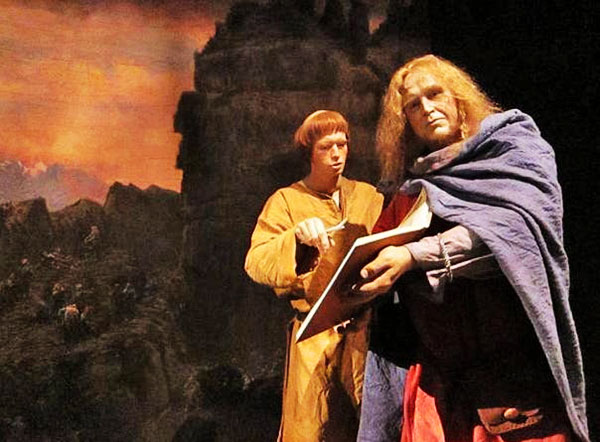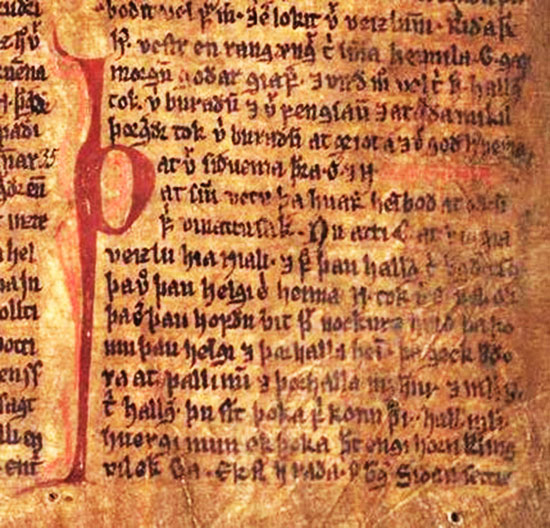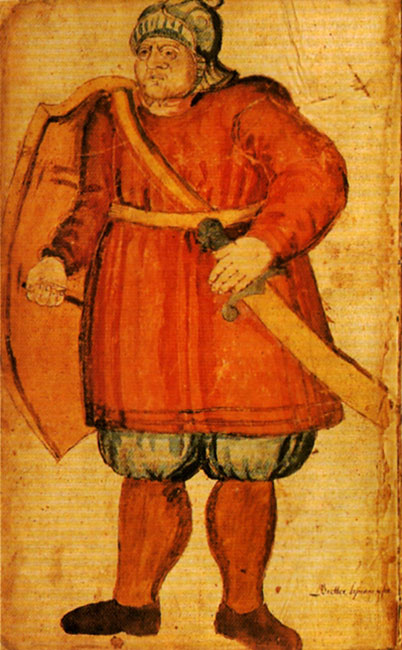|
Detail of a miniature from a 13th-century Icelandic manuscript. Source: Public Domain
In writing these sagas, many attributes of the 10th
and 11th centuries were conserved, particularly
individual biographies, the history of family feuds, and the overall
evolution of the one of the greatest settlements of the Vikings.
Though the sagas' author is unknown, the writings
have been considered the height of Icelandic literature throughout
the centuries, and remain the written epitome of Viking ideals,
values, and beliefs.
Iceland is thought to have been founded by the Vikings in the year 874 (there is new evidence that the settlement might have begun sooner than 874, due to the remains of a cabin found in Hafnir), though prior to their colonization, the island was inhabited by Irish monks.
If this date is correct, the land remained a pagan country for less than two hundred years before Christianity took over as the primary religion.
which tell the history of early Iceland - the saga age.
Jeffery
Simpson/Flickr
The sagas encompass much of the range of the Viking world - that is, the farthest reaches traveled by the Vikings are often points and scenes of interest in the stories.
Medieval Iceland was predominately made up of
wealthy land-owners by the 13th and 14th
centuries, thus these men could afford to commission the previously
oral tales of their ancestors' deeds into great and detailed works
of art.
The tales depicted describe,
Excerpt from Njßls saga in the M÷ruvallabˇk (AM 132 folio 13r) circa 1350.
Public Domain
Freedom, honor, love, and exile are only a few of
the many themes discussed in the form of these literary treasures,
interwoven with the religious dissonance and grand-scale exoduses of
the day.
Clever and beautiful women often are noted to have some impact on the state of affairs, whether convincing a man to go to war in her name or being the apple of two men's eyes who thereby decide to settle their disagreement in bloodshed.
Women instigate and end feuds as often as men in these sagas.
Furthermore,
Gender roles were clearly defined in Norse society, however women were valued highly in the Viking world, compared to other cultures of that era, and thereby influenced the sagas as much for the better as for the worst.
in this illustration from a 17th-century Icelandic manuscript.
Public Domain
Though some historians do not consider them to be
authentic historical works, they are valued as much for the view
into medieval Icelandic customs as they are for the powerful
characters and honorific themes they attempt to portray in their
everyday lives.
In ways such as this, the sagas provide
relatively accurate historical data and are thus treasures not only
to medieval literature, but also to modern Viking research and
scholarship.
References
|





